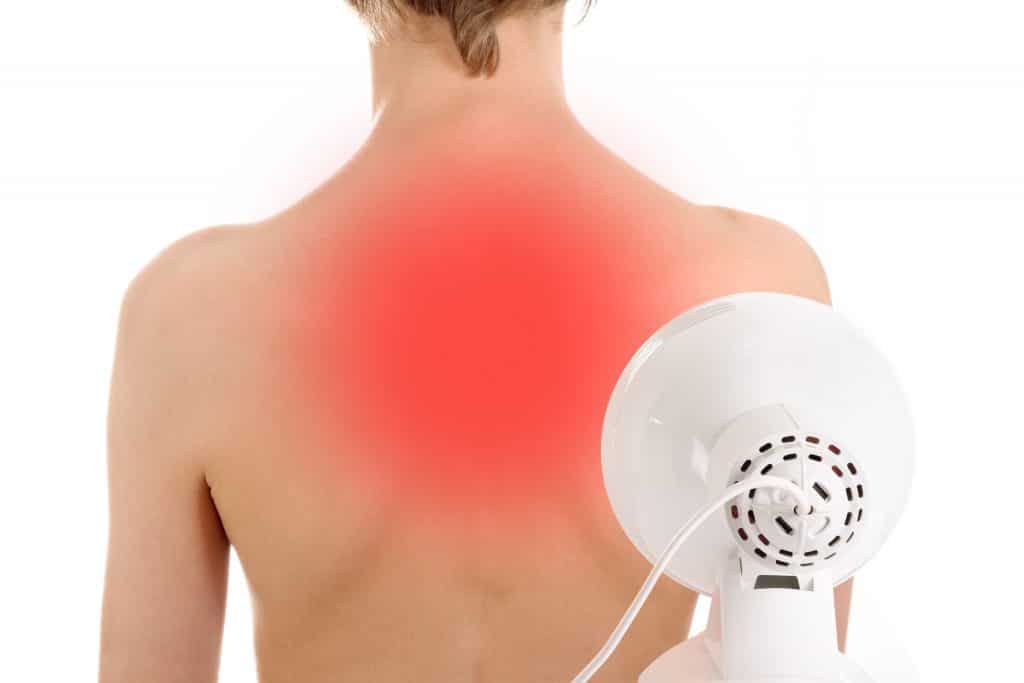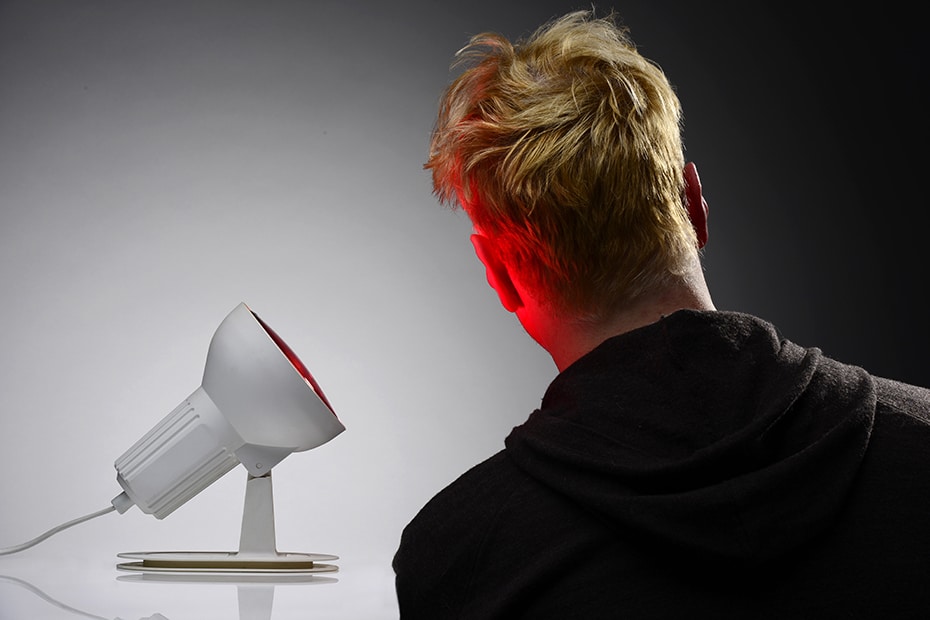
Though many are aware of the benefits of vitamin D produced by sunlight, there’s another type of light, equally beneficial to our health and wellbeing- red and near-infrared light (photobiomodulation) 1.
From skin anti-aging benefits to treatment for things like Hashimoto’s and cancer therapy side effects, over five thousand peer-reviewed papers now support evidence that red and near-infrared light therapy is an effective treatment for an impressively broad range of conditions including:
- Chronic inflammation
- Oxidative damage that drives aging
- Chronic pain
- Hair loss
- Autoimmune and hormone-related conditions
- Fatigue, depression, and conditions that compromise cognitive function
Just some of the benefits associated with red light therapy include:
- Fat loss and cellulite reduction
- Injury and wound healing
- Increased strength, endurance, and muscle mass
- Improved energy levels
There is overwhelming evidence to support why we should use red light therapy, which is why Dr. Michael Hamblin is also long-time advocate. You can hear our interview “The Science on Red Light Therapy Benefits” here.
How to Choose a Red Light Therapy Device
There are a number of factors to consider when choosing a device which I have further outlined here. Of course, you want a device that is long-lasting, well-manufactured, and warrantied. But you should also choose one that offers the correct wavelengths at the right power density over a large area.
More specifically, you should consider each of the following aspects when choosing a device:

Wavelength
In researching devices, ask what wavelengths of light it offers and whether these wavelengths actually offer health benefits.
As a general guideline, proven ranges of between 600-700nm and 780-1070nm are effective, but for even better results, look for devices that offer wavelengths within ranges of 630-680nm and 800-880nm.
Not all wavelengths are equal. Look for devices in the proven therapeutic range, which falls within the following parameters:
- Optimal healing spectrum of red light: 430-680nm
- Optimal healing spectrum of near-infrared: 800-880nm
- Or a combination of both
Power Density
You need to know how the device’s power density in mW/cm2; to calculate this, you’ll need to know the total wattage and the treatment area of the light.
Ideally, you should look for a power intensity of between 20-200mW/cm2. But you want a sizeable light that has a power density of at least 30mW/cm2, and around 100mW/cm2 from close range (about 6” away). Especially for deep tissue penetration, this range is necessary to achieve full therapeutic benefit.
Why is the power density of the light important? Your cells need to receive a certain intensity of red light to reap the full therapeutic benefit. Be aware that most lights on the market do not emit enough power/irradiance to reach therapeutic ranges.
Size and Treatment Area
These are critical components to consider when choosing the best red light therapy device.
The Problem with Using Smaller Lights
Typically, smaller lights of less than 12” present logistical challenges as well as issues of convenience.
Most small handheld devices and red lights sold online for anti-aging benefits and skin rejuvenation offer about 10mW/cm2, if not less. And they generally only treat a 5-10 square inch area at a time.
Since it can only treat a small portion of your body at once, you have to ask yourself if you’re willing to spend 30-60 minute sessions at a time, holding a device in various positions to achieve adequate coverage for the most therapeutic benefit.
Likely, the answer is no. You’ll quickly grow tired of using the device; you will have invested in equipment you won’t use regularly.
The Benefit of Using Larger Lights
Conversely, a larger light will cover more area in a faster amount of time, which is far more convenient.
If you get a device with a high power output that also treats a larger area at once, you’re more likely to use it, getting a greater benefit.
Look for a high powered device that delivers close to 100mW/cm2 because the device will still deliver effective doses— even from between 6” and 24” away.
In most cases, purchasing a large light panel over a small, hand held device is preferable, especially since most people who purchase smaller ones never end up using them.
Warranty
A warranty of at least one year will give you time to determine if the model works and whether it delivers the therapeutic benefits as promised.
With a high-quality red/NIR light therapy device from a reputable company, you’ll likely have it for many years (bear in mind, LED-based light therapy products generally last for upwards of 50,000 hours, or the equivalent of decades), and even if there is a problem, they’ll replace it.
What are the Therapeutic Benefits?
Devices offer varied wavelengths and, depending on the purpose for which you want to use it, you want to make sure you’ve purchased a light with the appropriate wavelength to get the greatest benefit.
If you’re purchasing a device to optimize brain health, you may want a light with a different wavelength than one designed to optimize, say, treatment of skin conditions like rosacea [efn_note]Rosacea. American Academy of Dermatology | Association.[/efn_note].
Some additional guidelines:
- Using a red light at 660nm will likely deliver optimal results when treating skin issues like fine lights and stimulating hair growth.
- For treating deeper tissue— organs, glands, joints or muscles and tendon issues — then you’ll want to consider using a pure 850nm light device.
- Near-infrared is best for treating depression, anxiety, cognitive issues or neurological disease (the VieLight Neuro is likely to deliver the most optimal results for these specific purposes) 2.
- For most people, the best option is a combination of the 660nm and 850nm LEDs in a large LED panel that will treat a large area of the body at once, and can be used for a variety of treatments, including anti-aging, injury healing, lower back pain, and fat reduction.
The fact is, many products currently on the market are underpowered, which doesn’t mean you’ll only reap some of the benefits of red light therapy, but more likely none of the benefits.
The bottom line is that wavelength and intensity are two elements to consider closely if you want to get the most benefit and avoid spending money on a device that just won’t work.
Photobiomodulation Dosing Guide
The general rule is this: too little of a dose will get you minimal to no effect, while too strong a dose— will get you minimal to no effect. This ‘goldilocks’ phenomenon is otherwise known as Biphasic Dose Response. With red light treatment, more does not equal better 3.
Effective dosage differs depending on the benefits you’re seeking (i.e. anti-aging v. deep tissue targets), but the rule of thumb is to focus on the total number of joules of energy.
For a typical photobiomodulation session on the brain, for example, you’d want a device that emits a few thousand— around three thousand — joules is best. If a device only produces a few hundred joules, it’s not likely to be effective unless it is very carefully targeted to specific areas of the body.
An effective light therapy session requires an effective dose, which means you’ll need::
- A relatively powerful light (i.e. has an ideal power density) of 20-200mW/cm2.
- A light that can treat a large area of the body at once.
- To know the correct distance for maximum effect (depending on the size of the area you’re treating)
A basic understanding of the optimal duration of time using the light to get the right dose can be expressed as:
Dose = Power Density x Time or
mW/cm2 x Time (in seconds) x .001 = J/cm2.
The dose you want to aim for is between 3J/cm2 and 50J/cm2.
So, for example, 25mW/cm2 applied for 40 seconds gives 1J/cm2.
This information is presented in a way that’s excessively oversimplified for the sake of clarity. But a very basic summary is this:
With skin treatments, you want to be further away from the light for an overall lower dose. For deeper tissues, you want to be closer to the light for an overall higher dose in a more concentrated area.
(See the infographic below for additional information.)
- IMPORTANT NOTE: The above recommendations are based on the lights I recommend. All these calculations change when you use lights that are less powerful than the ones I recommend. If you purchase a different light, you will need to measure the power density of that light at different distances and calculate doses for that specific light according to the guidelines in this post.
What to expect after therapy
Because LED light therapy is non-invasive, no recovery time is required, which makes it an even more attractive option for treating any number of conditions. And, after treatment is completed, patients may return to everyday activities immediately.
However, even after you’ve achieved the recommended amount of sessions, be aware that results aren’t permanent.
As your skin cells turn over, you may lose some collagen and start to see signs of aging once again or you might even start to notice new acne breakouts (if previously using the device for acne treatments). This is why it’s important to have maintenance treatments every few months (or as recommended by your provider or dermatologist.)
Are Goggles Needed During Treatments?
Goggles are not generally required when receiving red and infrared light therapy. However, with strong red lights, your color vision can be distorted for several minutes afterwards—everything may appear more blue/green, as your eyes re-sensitize to red light. But vision should normalize quickly following treatment.
Are there any safety concerns?
As a noninvasive, highly effective option for addressing a wide variety of issues, proper red light therapy is as safe a treatment as you’ll find on the market today.
Even if there’s an overdosage incident, there are no harmful effects (although too much light therapy can reduce the effectiveness of the treatment).
Unless you or your provider use heat-based lamps, skin will never burn as the result of red and infrared light therapy.
Will home use make our electricity bill go up?
As red and infrared light therapy uses the most energy-efficient lighting technology, it is also the cheapest source of light. And, as the device is used only for several minutes a day, you’ll see no noticeable effect on your electricity bill.
Wrapping Up
The bottom line is, if you’re going to invest your time and treasure, it only makes sense to purchase a well made, high-quality device from a reputable manufacturer, and to educate yourself on the best practices for using it to get the most bang for your buck.
You can also check out my “Ultimate Guide to Red Light Therapy” for more useful information on how to get the most out of red light therapy.
References[+]
| ↑1 | Ware, M, (2017). What are the health benefits of vitamin D?. 2017 Nov 13. |
|---|---|
| ↑2 | High-Functioning Anxiety and Depression. Bridges to Recovery. |
| ↑3 | Calabrese, E, (2013). Biphasic dose responses in biology, toxicology and medicine: Accounting for their generalizability and quantitative features. 2013 Aug 28. doi: 10.1016/j.envpol.2013.07.046 |




